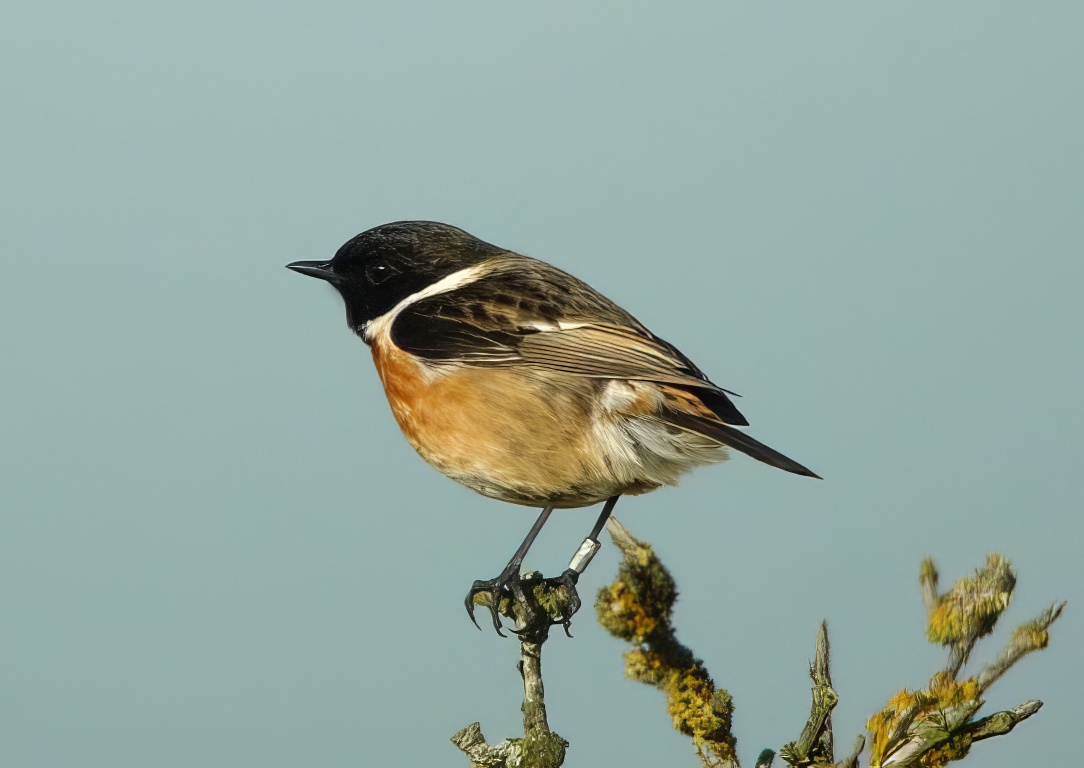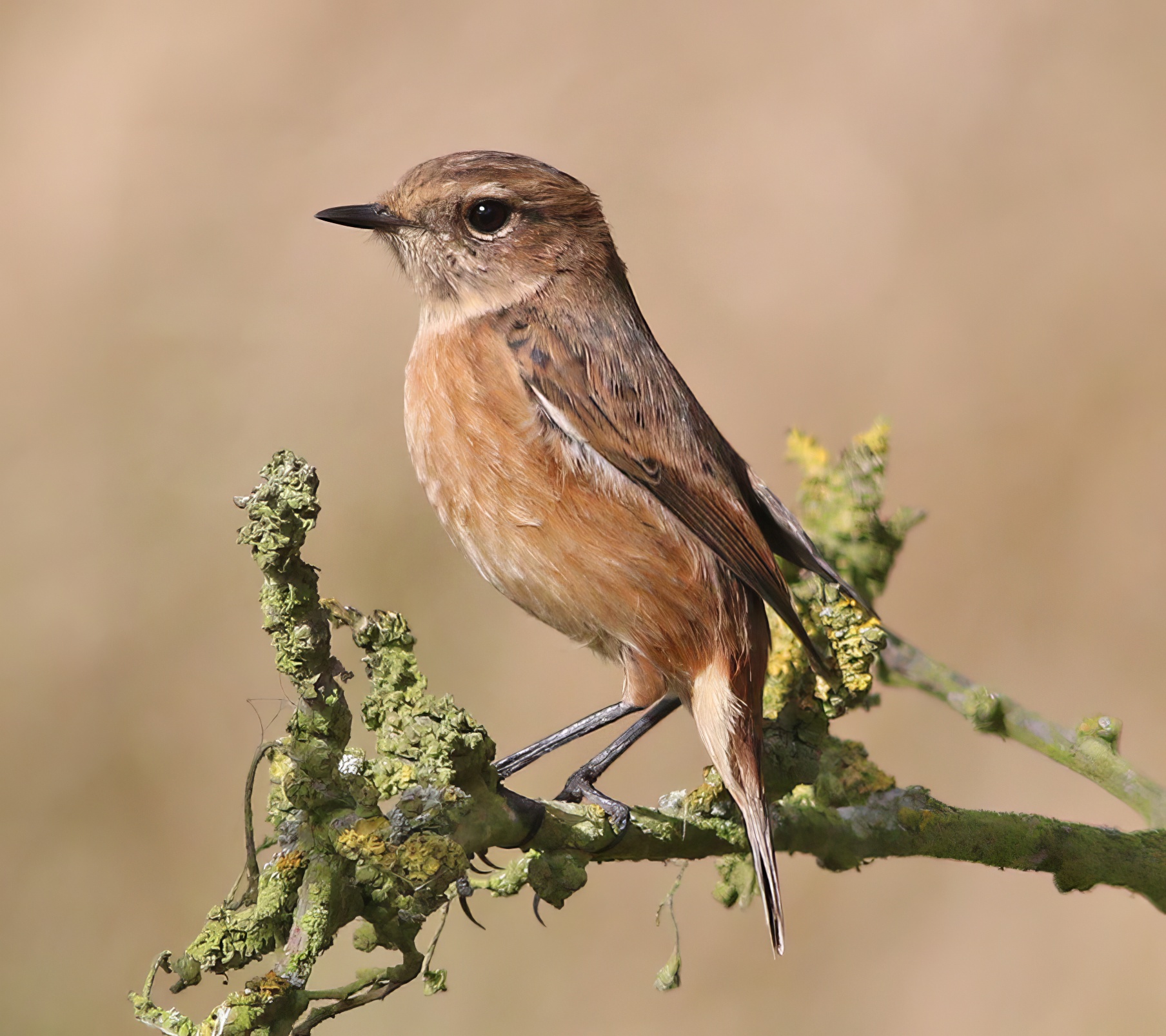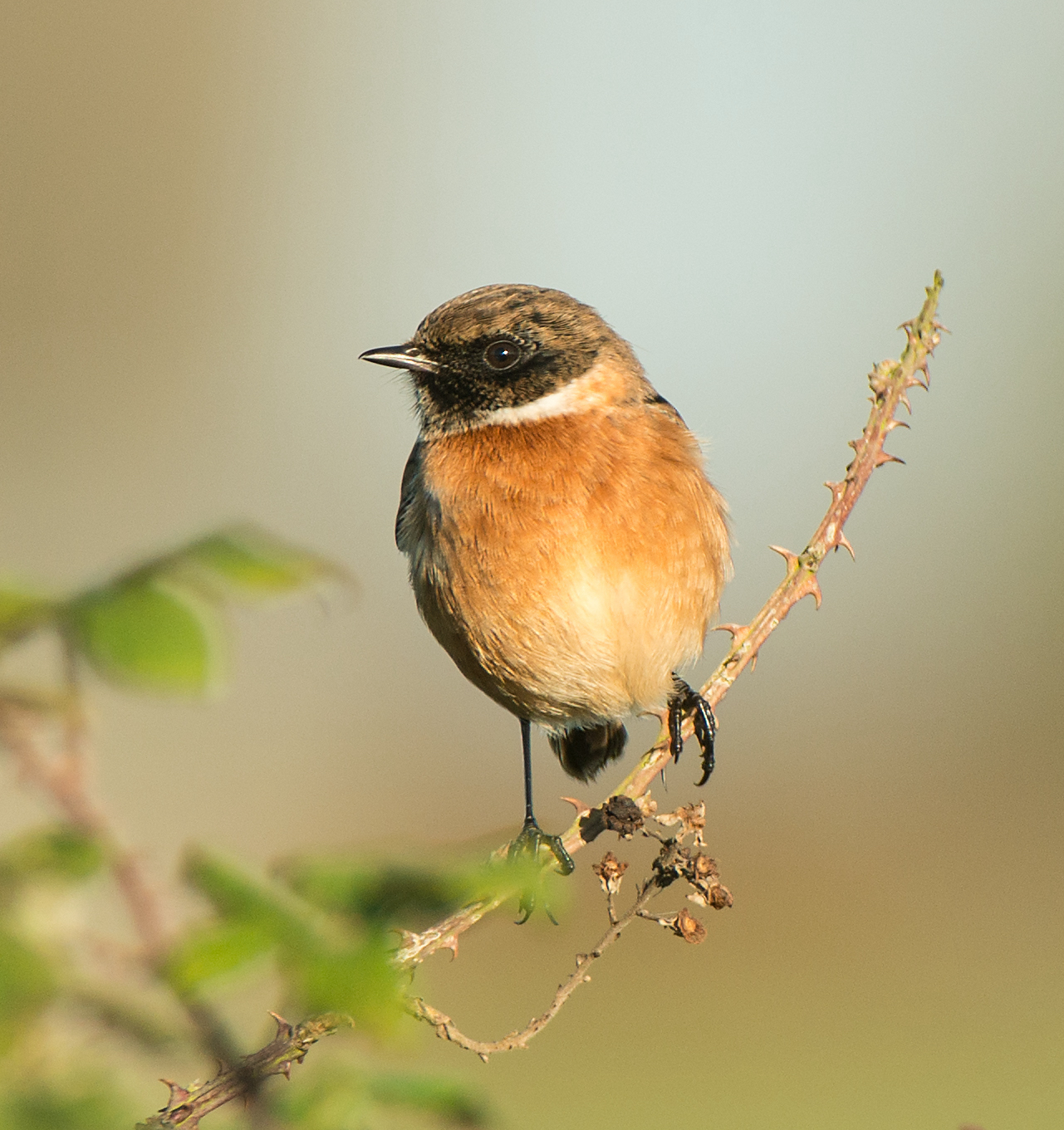European Stonechat Saxicole rubicola
Scarce/fairly common passage migrant and winter visitor, mainly September-April. Very scarce and sporadic breeder.



There are two races of European Stonechat, S. r. hibernans, which breeds in Ireland, Britain, western France and Portugal; and the nominate race S. r. rubicola, which breeds in west, central, and southern Europe, north-west Africa and Turkey to the Caucasus. They formerly bred locally in the north-west, on the north-east coast and the Fens but died out by the late 1940s. It has been a “nearly” breeder in Lincolnshire for over 50 years and The Atlas found one confirmed breeding record at Saltfleet in 1980. It then bred in six out of last 20 years to 2018 with probable breeding in 2016 (juveniles at Garthorpe, June 9th); 2019 (Alkborough Flats, two nests: one failed, the other fledged four young); 2021 (Holbeach Marsh, a pair with 1+ fledged young June 27th, and at Crowle Moor, male with two fledged juveniles July 2nd).
It is much better known as a wintering bird and can occur all along the coast during winter from Alkborough to Nene Mouth. The BTO Atlas 2007-11 showed it wintering in more than two thirds of all the counties 10km squares. LBR shows that in the five years to 2018 peak numbers usually occur from October-January with a peak monthly count across the county of 63 birds in October 2016. The highest individual day counts come from Gibraltar Point with a peak of 25 in October 2017.
